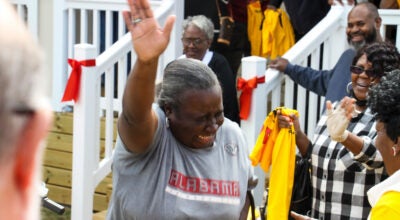Severe Weather Awareness Week is at hand
Published 12:36 am Tuesday, February 23, 2010
SELMA — Severe Weather Awareness Week is all about preparation.
“Preparedness is everyone’s responsibility,” said Rhonda Abbott, interim director of the Dallas County Emergency Management Agency. “There may be people out there who have never been personally touched by the adverse effects of weather, but there is no part of Dallas County or Alabama that is save from severe weather.”
This week is an annual public awareness campaign to draw attention to severe weather preparedness. The National Weather Service started this event in 1974, following the April 3-4 super-outbreak of tornadoes in the Midwest, South and East. Overall, spotters and weather service stations reported 148 tornadoes. About 315 people lost their lives and another 5,000 were injured.
Although the National Weather Service began the effort, additional partners have joined. For instance the Dallas County Commission and City of Selma joined with The Selma Times-Journal Sunday to publish and insert a weather guide in home-delivered newspapers.
“For $500 it’s incredible information with a lot of circulation,” said Kim Ballard, probate judge and chairman of the commission.
The commission wants the public to take the booklet and make a conscience effort to prepare for the worst.
“by taking a few minutes to educate yourself about severe weather safety procedures, you can save your life or someone else’s life,” Abbott said.
Today’s focus is on lightning. The summer months of June through September are the deadliest for lightning. In an average year, three people will be stuck and killed by lightning in Alabama, according to the National Weather Service in Birmingham, and at least six will be injured.
Keys to lightning safety:
– Move inside a well-constructed house, a large building or an all-metal vehicle. Stay away from electrical appliances and do not use the telephone.
– If you are in a boat, get off the water and into a substantial building or at least into an enclosed and all-metal vehicle with the windows up. If you are caught in an open metal boat, lie down in the boat with cushions between you and the metal sides and bottom.
– If you are caught outdoors during a storm and are too far away from appropriate shelter, you only have one last-ditch effort to lower your chances of being directly struck. Crouch down low, but do not lie flat on the ground. If in a ravine or valley, be alert for flooding. The best advice is to check the forecast and watch the sky for storm development and not put yourself in the situation where you are out in the open when a thunderstorm occurs.
– Move away from motorcycles, scooters, golf carts, bicycles, tractors and other metal farm equipment. Avoid wire fences, clotheslines, metal pipes and drains, railroad tracks and any other metal surfaces.
– Avoid isolated trees. Stay away from the tallest trees. If caught in the woods, pick a small grove of trees as your shelter and stand at least 5 feet from the trunk of the nearest tree to avoid flying bark if the tree is struck.
– Avoid standing in a small isolated shed or other small ungrounded structure.
– If you are with a group of people in an open area and cannot get to appropriate shelter, spread out before you take last-ditch efforts.




